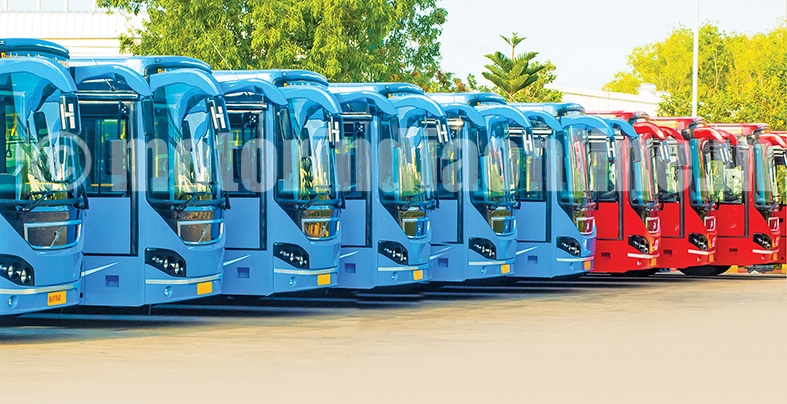The Indian bus industry, which is the second largest in the world, is an integral part of the automobile industry in the country. In India buses are the common means of transport for both inter and intra-city travel. Better road infrastructure, improved connectivity to remote places, etc., have attracted more people to go in for bus travel in the country, fuelling the growth of the industry as a whole. In fact, the BRT system as introduced in a few States is gaining momentum offering immense potential for bus enthusiasts. Here the JNNURM Scheme introduced by the Government deserves all praise. Both private and public operators are consistently expanding their fleet operating across the country. The growth in this market has stimulated manufacturers, operators and the allied industry to go in for innovations and latest technology. Further, buses are getting smarter and greener with the Government campaign for developing Smart Cities. In fact, the NDA Government’s proposal to create 100 Smart Cities has encouraged commercial vehicle manufacturers to line up buses and vans of the likes that have never been seen in India before.
During the post-Independence period until the 1980s, the Indian bus industry was fully dominated by two major players, namely, Tata Motors and Ashok Leyland. The post-liberalization era has witnessed the entry of several new players, including multinational manufacturers. Today India has emerged a most attractive bus market attracting investments of several foreign OEMs.
Rising transportation activity
The ever-increasing demand for moving people and goods faster is both a cause and effect of India’s rapid economic growth. Though a higher mobility is necessary to boost the Indian standard of living, there are harmful consequences associated with it. These include a greater reliance on imported fossil fuels, which are responsible for the damaging climate change, and rising vehicular emissions that lead to several diseases and premature death. The road infrastructure has to be necessarily expanded to meet the growing transportation needs and to maximise the benefits of increased mobility while minimizing, if not eliminating those harmful consequences.
For an emerging economy like India transport is a major issue in most cities. With only 25 of the large cities offering some form of organized city bus service, most others depend on informal intermediate public transport facilities. In the larger cities, limited supply and poor quality of service has led to drastic decline in patronage of public transport and to large-scale motorization. As a result, the problems of congestion and pollution have become more acute. This has resulted in additional global warming through increased GHG emissions.
Despite higher investments in road infrastructure, clean fuel policies, and the construction of flyovers, travel conditions for an average Indian citizen remain a major concern. Further, planning and development of road infrastructure, regulations for private or public vehicles, licensing procedures, and operations of State transport undertakings (STUs) continue to be done in a piece-meal manner and in isolation, ultimately adding to the problem.
Scrap and save life
According to a latest study, 65 per cent of pollution is caused by heavy vehicles which have completed 15 years and thus become a major hazard to human life. In order to save the precious life and to be fully committed to global climate issues, the NDA Government, through its proposed Vehicle Fleet Modernisation Programme (V-VMP), plans to scrap 12 to 15 lakh heavy vehicles of over 15 years. The first phase of the programme will cover mostly trucks and buses.
The draft of the new policy, which would be ready soon, will help not only the bus manufacturers to get more orders but also ensure a pollution-free air.
